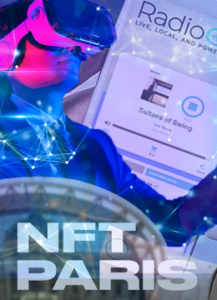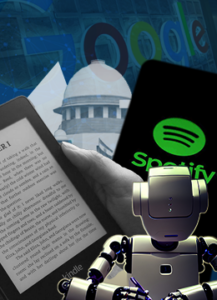Unlock the Full Potential of Blockchain: Trace Your Clothes, Secure Your NFTs, Lead the Energy Transition, and Take Back Your Identity | Blockchain Brief Nov 7th, 2022
Fashion Industry Adopts Blockchain for Cotton Traking

The apparel and fashion industries today face a large obstacle in the way of product transparency and traceability. Because these industries have a fragmented and complex supply chain with many participants, it can be difficult to trace the finished products and raw materials to their origin. This is where blockchain technology can have a major impact.
A majority of the world’s fabrics are made from cotton, accounting for over 40 percent of all global fiber production. India substantially contributes to the global cotton supply, taking up 22% of the total rate. The country’s Union Minister of Textiles, Commerce, and Industry has stated that it is imperative that the cotton industry stakeholders explore the use of blockchain technology to ensure customers receive optimal quality products. The Federation of Telangana Chambers of Commerce and Industry (FTCCI) is considering blockchain technology to increase the traceability of cotton from farm to export.
Because blockchain or distributed ledger technology (DLT) offers users an immutable and transparent record of data, it has become increasingly popular for tracking items from manufacture to shelves in recent years. Using blockchain allows users to see the history of a product through every step of the production process. Multiple initiatives have begun to integrate DLT into the supply chain process through RFID and QR codes. Even though non-modifiable goods like cotton might face difficulties being documented on distributed ledgers, advanced smart contracts could turn this around. The United Nations Economic Commission for Europe (UNECE) collaborated with several major fashion houses in 2020 to see if using DLT could improve the traceability of cotton throughout the garment industry. The aim of the project was to build an open-source solution that is available and free for use by all industry participants.
In addition, DLT can be used by the government to tamper-proof certificates and optimize land registry processes. One of the states in southern India is taking the lead on DLT adoption in the area by setting up a regulatory sandbox that allows private entities to come up with innovative solutions using the technology. The purpose of this sandbox is to open a conversation between all relevant parties – such as regulators, policymakers, and startups – about developing a more comprehensive strategy for the Web3 framework. By working together, we can create an improved online system that will be beneficial for all users.
OpenSea Rolls Out Two New NFT Theft Protection Features
The release of these two new security features on OpenSea will protect NFT owners from common phishing attacks, as well as the resale of any stolen NFTs that might end up on the platform.
On Wednesday, OpenSea, a leading non-fungible token (NFT) marketplace announced the introduction of two new features to stop theft on its platform. The two features, which respectively prevent and detect NFT theft, are part of the company’s greater goal to reduce scams within the industry.
One of the main reasons why NFTs haven’t been adopted by a larger audience yet is due to trust and safety concerns regarding scams and theft. The aim of new features is to make the ecosystem safer by reducing the downstream sales of stolen items, which will in turn reduce the incentive for NFT theft.
The first new theft prevention feature on the platform will actively scan URLs to stop malicious links from being shown on fraudulent listings for collections. In recent months, these types of links have been a big issue. So-called “wallet drainers” trick users into signing over the control of their NFT wallets so they can take funds or relocate digital collectibles. The second feature in testing will automatically detect and flag any NFTs that appear to be stolen or transferred suspiciously, and then prevent them from being traded on the platform. Doing so would potentially lower the value of stolen NFTs, helping reduce the motivation for theft overall.
Previously, the platform only displayed a warning sign for stolen NFTs but allowed them to be still traded. The new feature will now halt any trades and mark the NFT as “under review” for a week while contacting the original owner to confirm or deny the legitimacy of the sale. OpenSea is working with other businesses on initiatives to reduce fraud.
Accelerating the energy transition with Web3 technologies
A combination of sustainability goals and innovative technologies like blockchain and AI presents new opportunities for the energy sector.
We are on the cusp of the Fourth Industrial Revolution, which will soon disrupt every industry and market worldwide. With the arrival of Web3, energy markets are at the forefront of this revolution. The combination of AI, blockchain technology, edge computing, and the IoT is creating a more decentralized and collaborative version of the internet.
The internet is shifting from a centralized system to a decentralized one, which does away with the need for intermediaries and provides everyone equal opportunities. This mirrors how the energy sector is moving away from centralization and towards decentralized distribution. There are many ways that Web3 and blockchain technology can help support the urgent energy transition.
Implementing blockchain technology in oil and gas trading can reduce the cost of maintaining various trading systems, as well as data management costs, delays in settlements, and communication between different systems. The oil and gas industry is made up of thousands of companies which can generally be divided into three categories: upstream, midstream, and downstream. The journey of one unit of the resource usually includes hundreds of different entities, companies, processes, and legal agreements.
Upstream in the oil and gas industry refers to resource exploration and extraction. The upstream oil and gas segment is controlled by four key groups: major (large, oil and gas companies that manage or own oilfields and wells), national oil companies (NOCs), independents, and oilfield services. With multiple stakeholders and data sources coming from other businesses, blockchain technology is the best option for large-scale data coordination among multiple parties.
Midstream entails the facilities and processes needed to store and move raw resources after they have been extracted. This also encompasses a broad scope of regulation for managing transportation networks. Oil and gas companies operating in the midstream segment can improve their performance by sharing information with others in the industry. Blockchain technology is especially well-suited for providing multi-stakeholder information sharing, and asset tracking.
When we talk about the downstream part of a supply chain, we are referring to companies that refine resources into multiple final products or sell products to end users, such as gas stations.
In addition, downstream businesses must manage several different types of products – each with distinct regulations and specific transportation methods. Blockchain technology can streamline the management of complex supply chains that include many products. By recording and tracking supply chains blockchain has the potential to significantly reduce waste throughout the supply chain process. In order for the next industrial revolution to reach its full potential, businesses and consumers need to trust in the systems that new digital technologies create. And there is no one better equipped to generate this trust than governments, through regulations and the rule of law.

Blockchain Plans? You’re already late!
How can we help you?
How to take back our identities in a Web3 world
Have you ever felt like your personal information is being used without permission? You are not alone. A digital self-sovereign identity (SSI) is the answer. It would allow you to own, control, and manage your personal data as you see fit without sacrificing safety or privacy.
We’re living in a digital age that is strikingly similar to the feudal system centuries ago. Back then, serfs worked the land and created value while landlords took most of what was produced. Today, data is the new asset class. We create it, but digital landlords such as social media and other Web2 applications capture it. Instead of leisurely browsing the internet, we now find ourselves inadvertently handing over personal details that tech giants use to make a profit. This is crucial because your personal data is not just an afterthought, but a fundamental piece of your identity in the digital age, it constitutes a digital version of you, one that remembers everything you did and everyone you interacted with online.
This system has major flaws. Most people are unaware that we can’t actually use our own data to plan our lives. It’s stored in silos owned by other people, which we can’t access. However, often times third parties are able to get a hold of this information without us knowing. We get none of the benefits from this third-party data usage while taking on most of the responsibility and risk if our data gets lost or abused. Not being able to monetize our data ourselves is frustrating, especially when we see companies making a fortune from it. So what’s the solution to this? A self-sovereign identity.
A digital self-sovereign identity (SSI) is something that we all need. It cannot be given or taken away by any central administrator, it can be used online and in person anywhere in the world, and it will be enforced regardless of the context. An SSI starts with Web3, which is also known as the Internet of ownership. It supports the creation and custody of non-fungible tokens that serve as our identities. These tokens comprise our data and store it in such a way that only we have access to it, and can grant others such access. Imagine a safe space for identities, one that is distributed and maintained by the people whose identities it would protect. This way, everyone’s goals are aligned, and those who hold tokens can participate in the decision-making process around how the space is used and preserved. Having ownership of our data is more important than just having access to it. The self-sovereign identity is one of the key components to a more open, inclusive, and private digital economy.
Are decentralized blockchain messengers a real alternative?
If you’re sick of your centralized communication apps crashing all the time, a decentralized solution might be for you.
The goal of instant messaging (IM) services has remained the same since ICQ first debuted. These days, users just want their chat apps to work – which seems to be an increasingly tough task, given the frequent downtimes most popular chat apps experience. Centralized services like WhatsApp are used by billions of people every month, so when they go down, it can cause a lot of confusion and frustration. WhatsApp, with its mainstream reach and industry backing, is the epitome of a centralized mindset: people have no control over the final product despite its widespread use.
A product controlled and managed by one centralized entity usually follows specific processes during its lifecycle. One person has to be in charge of the various aspects of the centralized product. The large size of the product turns even small updates into a huge and disorganized mess, with human errors, database issues, and a lack of time to test the version before releasing it. With an overflow of cyberattacks on the infrastructure as a whole, it’s no wonder that singular entities managing the service are more prone to failing.
On the contrary, communication-based decentralized apps (DApps) provide sturdy systems. The more users are onboarded onto a decentralized messenger app, the stronger it becomes as each user acts as a supporting “node” for proper system function. Decentralized services have come a long way, but they need to improve their user base and mainstream adoption rates before they can compare to centralized services. Furthermore, it’s worth remembering that as DApps become more prevalent, they will most likely require greater regulatory oversight. Governments are only just starting to understand cryptocurrency, so this new form of communication would present significant challenges for them.
You May Also Like ...

Navigating the AI tightrope: Balancing risks and rewards | May 26, 2023
The launch of Web 2.0 marked a critical moment in our history, revolutionizing the way we relate to each other and understand how connections can benefit everyone indiscriminately.

Living in the Future: Meta Adapts AI, AI and Radio Unite, and More | Blockchain Brief March 6, 2023
The launch of Web 2.0 marked a critical moment in our history, revolutionizing the way we relate to each other and understand how connections can benefit everyone indiscriminately.

Creative Possibilities: Author ChatGPT, Unlocking Web3 Horizons with Google Cloud, AI Helps Serve Justice, and More | Blockchain Brief February 27, 2023
Technology is quickly progressing and taking the forefront of every technological race. Here are the latest updates about Blockchain, AI, Web3, and more!